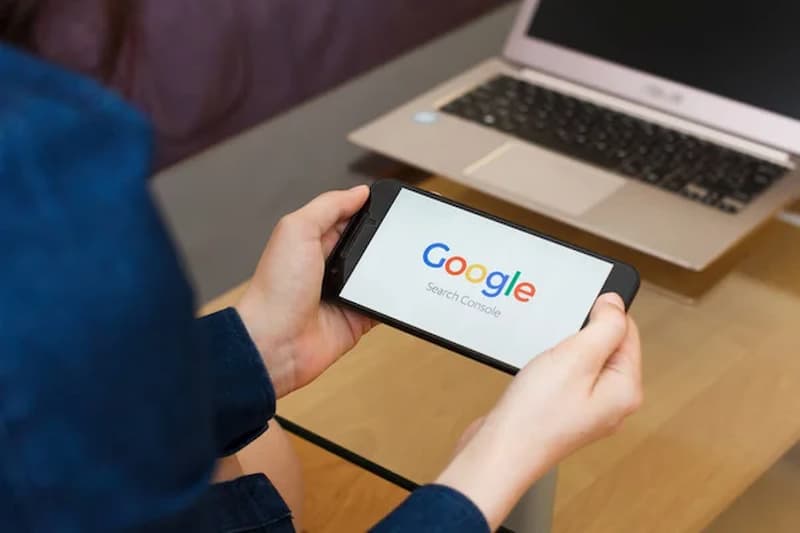As website owners increasingly recognize the importance of catering to mobile users, the terms “mobile optimization” and “mobile-friendly” are often used interchangeably. However, there are significant differences between the two. The struggle website owners face with their websites is that they may be difficult to use on mobile devices, resulting in a poor user experience that can hurt user engagement and search engine rankings.
As of 2022, the global number of unique mobile internet users reached five billion, representing more than 60 percent of the global internet population using mobile devices to access the internet. Website owners need to understand the distinctions between a site that is mobile-friendly and one that is mobile-optimized. This article will cover the common mistakes to avoid, best practices to follow to capitalize on SEO, and tools you can utilize to test your site.
What is Mobile Optimization?
From an SEO standpoint, there is a significant difference between mobile-friendly and mobile-optimized websites. While a mobile-friendly website may display correctly on mobile devices, it may not be optimized for the best possible user experience, leading to slower load times and reduced user engagement.
On the other hand, a mobile-optimized website designed specifically with mobile users in mind involves making deliberate design choices and using tools and techniques to ensure the site is optimized for them. These design choices include faster loading times, clear navigation, and easy-to-read text. A mobile-optimized website provides a seamless user experience, leading to improved search engine rankings and increased website traffic, resulting in increased engagement and conversions.

4 Common Mobile Optimization Mistakes
Website owners can make mistakes that significantly impact user experience and search engine rankings. It’s essential to be aware of these common mistakes and avoid them to optimize your website for mobile users. Slow page load times, unresponsive design, not optimizing images, and pop-ups and interstitials (a small intervening space that typically covers underlying content) are among the most common issues that can negatively affect mobile optimization efforts.
Slow page load times
Page speed is a crucial factor in mobile optimization and significantly determines a website’s search engine ranking. It takes less than 3 seconds for a mobile user to decide whether to stay or leave a web page. Slow-loading websites can negatively impact user experience, leading to high bounce rates and reduced user engagement.
The average amount of time users spend on a page in any industry is roughly 54 seconds. This is not a long time to make a lasting impression to keep users engaged with your site.
Search engines prioritize websites that load quickly, improving user experience. Use a tool like Google PageSpeed Insights to identify specific areas for improvement. Common causes of slow page load times include
- Large image files – take longer to download and render, which can cause slow page load times. The optimal file size for images on a website and full-screen background images is between 1500 and 2500 pixels.
- Unoptimized code – can cause slow page load times because on mobile devices with slower internet speeds. To avoid this issue, website owners should use tools to minify and compress code. The optimal file size for images on a website is no more than 200 KB.
- Server issues – a slow or overloaded server can cause slow page load times. Using a reliable hosting provider or a content delivery network (CDN) to distribute content across multiple servers will help reduce server load.
Unresponsive design
When a site is not optimized for various mobile devices, it can be challenging to navigate, and the layout may appear distorted, leading to a poor user experience. Common issues include
- Text that is too small to read – Generally, font sizes for mobile websites should be at least 16 pixels. Anything smaller than this could negatively impact the readability of the content, particularly for individuals with visual impairments.
- Images that do not fit the screen – Websites built using content management systems such as WordPress, Shopify, Wix, Squarespace, and others typically require images of specific recommended sizes.
- Buttons that are difficult to click – When buttons are too small, too close together, or not placed in the optimal location, it can lead to a poor user experience and frustration for mobile users who struggle to navigate the website. The highest level of accuracy in clicking or tapping buttons on mobile devices is when the button size falls between 42 and 72 pixels.
To avoid these mistakes, use responsive design practices, which adjusts the website’s layout based on the device being used. Creating a flexible layout ensures a consistent user experience across all devices – desktop, tablet, and mobile. Responsive design helps reduce bounce rates and increase user engagement, which are essential factors in determining search engine rankings. Test your website on various mobile devices to ensure it’s optimized for different screen sizes.
Not optimizing images
Large image files can slow page load times, impacting the user experience and search engine rankings. Images should be optimized for the web, reducing their size without sacrificing quality. Optimizing images includes
- Compressing them – Compression of an image involves grouping and condensing similar pixels that make up the image. Although applying image compression reduces the quality of the image, it is often difficult for viewers to notice any difference when viewing the image on a mobile device.
- Resizing them – For most smartphones, the optimal image resolution is 640 by 320 pixels. However, it is important to maintain the aspect ratio of the original image to prevent distortion in the image.
- Using the correct file format – JPEG, PNG, GIF, and WEBP are the most commonly used image formats. JPEG is a lightweight compression image format. PNG allows background transparency, making it perfect for icons, logos, and other graphics. GIF can be used for short, animated clips that highlight product images. WEBP is a newer format for products, banners, and featured images in smaller file sizes.
Pop-ups and interstitials
Intrusive pop-ups and interstitials can frustrate mobile users, leading to high bounce rates and reduced user engagement. While the conversion rate for popups gravitates around 11% on mobile, the intrusive nature of these ads impacts more users negatively.
Interstitial ads are triggered by a user’s action, such as clicking on another article, rather than appearing immediately like pop-up ads. These ads also typically have a built-in frequency capping feature, limiting them to one interstitial ad per user per hour, while pop-ups do not have this restriction.
Website owners should avoid using these types of elements, particularly on mobile devices. Instead, they should focus on creating a seamless user experience that provides relevant content and is easy to navigate.
Testing and verification
Now that we’ve explored the difference between mobile-friendly and mobile-optimized websites, it’s time to delve deeper into testing and verifying a mobile-friendly website. Testing and verification are critical components of mobile optimization, as they ensure that the website is optimized for the best possible user experience across all devices.
Mobile usability and Mobile-friendly testing
Performing mobile usability and mobile-friendly testing is crucial in ensuring that your website is optimized for mobile users. Tools are available to help you test your website’s mobile-friendliness. Here are a couple to consider:
- Small SEO Tools Mobile-Friendly Test – like Google’s mobile-friendly test, this tool allows you to carry out a mobile site test easily and gives you a score of your site’s mobile responsiveness. The test score will give you an idea of whether your website provides a good experience for mobile users.
- Page Speed Insights (PSI) – is a free online tool that evaluates your website’s performance and provides relevant site data. It assesses your web page’s performance, offering insights into ways to optimize your website for both desktop and mobile devices. Using this tool, you can measure your website’s performance and take proactive steps to enhance its user experience, driving more traffic to your site.
These tools allow you to see how your website appears on different mobile devices and identify issues impacting user experiences, such as slow load times or distorted layouts.
Mobile-friendly website verification with Google Search Console
To verify your website’s mobile-friendliness, you can use Google’s Mobile Usability Report, which identifies any issues that may be impacting the mobile-friendliness of your site. Once you’ve identified any issues, you can take proactive steps to address them, such as optimizing your website’s layout, improving page speed, and enhancing user experience. Verifying your website’s mobile-friendliness with Google Search Console improves your website’s search engine rankings and enhances your website’s user experience, driving more traffic to your site and increasing conversions.

Mobile-friendly sitemaps
Mobile-friendly sitemaps provide search engines with information about the structure and content of your website, making them easier to index and rank. You can use tools such as XML Sitemap Generator and Google Sitemap Generator to create a mobile-friendly sitemap. By providing search engines with a mobile-friendly sitemap, you can improve your website’s search engine rankings and visibility, driving more traffic to your site. A mobile-friendly sitemap allows mobile users to easily navigate and find the information they need on your site.
A customized user experience
In today’s mobile-dominated world, having a mobile-friendly or mobile-optimized website is crucial for businesses to reach their target audience and stay competitive. By avoiding common mobile optimization mistakes and utilizing the tips and strategies outlined in this article, website owners can create a seamless and enjoyable mobile experience for their users, improve search engine rankings, and ultimately drive more traffic and revenue.
At My Website Spot, we specialize in creating custom web design solutions optimized for mobile and tailored to your unique business needs. Our team of experts can help you navigate the complexities of mobile optimization and ensure your website provides the best user experience possible. Contact us today to learn more about our web design and SEO services.

